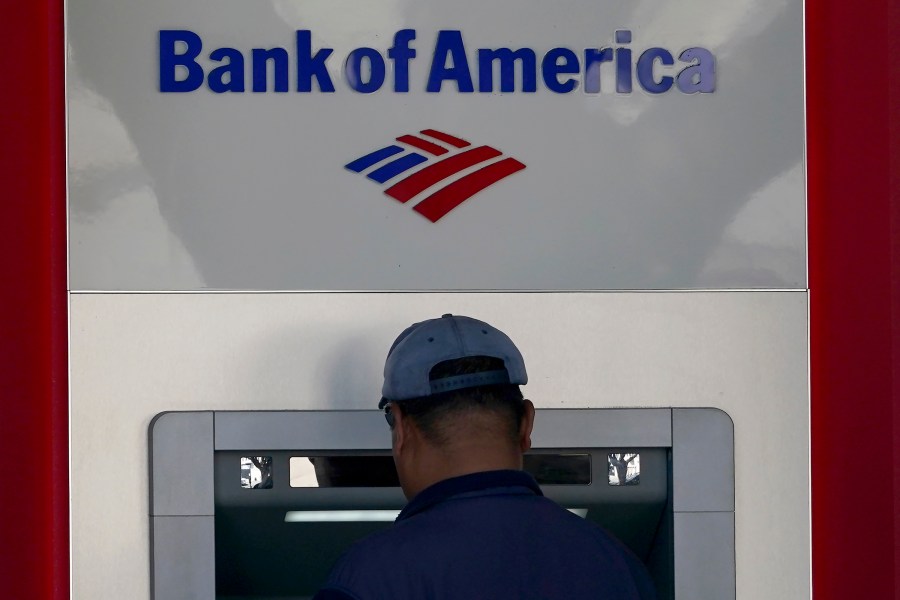Consumer debt climbs as American credit card balances surpass $1 trillion

Consumer debt grew $17.9 billion from May to June as a credit crunch brought on by Federal Reserve rate hikes drove a sharp gain in the amount of outstanding credit for payments like mortgages and car loans.
The numbers, which are not adjusted for inflation, come in well ahead of expectations at $13 billion and nearly double the increase from the previous month at $9.4 billion.
Debt levels on lump-sum purchases like houses and student loans increased $18.4 billion, offset by a 0.6 percent decrease in the amount of “revolving” credit, which includes things like credit cards and lines of credit.
The dip in revolving credit is catching the eye of economists.
“This is surprising and inconsistent with other data we have on consumer spending in the month,” economist Dean Baker with the Center for Economic and Policy Research told The Hill.
“These data are erratic and often subject to substantial revisions, but if we see another drop in July, that would indicate that some consumers are getting maxed out, and we may be in for a substantial slowing in consumption in the second half of the year,” Baker said.
Overall, Baker said, “the second quarter data shows modest credit growth. It fits with the story of consumption growing at a sustainable pace.”

Credit card debt hits $1 trillion for US consumers
Despite the month-over-month decline in revolving credit, credit card debt weighing on U.S. consumers is at an all-time high of more than $1 trillion.
After rising steadily over the last decade, credit card debt levels started easing up in March 2020, when the government started sending out checks to help households weather the coronavirus pandemic.
They fell by more than $100 billion over the following year, dropping to $736 billion in April 2021. But then they started rising sharply once again during the booming recovery and are now above their pre-pandemic trend.
Secret spending: Americans are hiding their credit card debt
Total credit card debt is 11.6 percent higher than it was last year, down from a recent high of 18.4 percent last September.
As a share of disposable income, debt service payments are about where they were before the pandemic, hitting 5.7 percent in the first quarter of this year.
Credit card interest rates, along with mortgage rates and other types of financing that rely on charging interest, have been skyrocketing as the Federal Reserve has been raising the rate at which banks can lend each other money.
The average commercial bank interest rate on credit card plans is now above 20 percent, up from just 14.5 percent in February of last year, before the Fed started slowing the economy in response to higher inflation.
That’s the highest level on record for a payment method that is traditionally one of the most expensive ways for consumers to purchase goods and services.
While many measurements of the macroeconomy look healthy at the moment, with second-quarter gross domestic product doing better than expected and inflation dropping fast, it’s not clear that these conditions are extending beyond businesses and improving things for workers and consumers.
Most Americans are living paycheck to paycheck
A recent poll by Lending Club found that a majority of Americans say they are living “paycheck to paycheck.”
“In May 2023, 57 percent of consumers lived paycheck to paycheck,” the poll found.
More than 72 percent of people making less than $50,000 a year live “paycheck to paycheck” while 60.9 percent of people making between $50,000 and $100,000 annually live that way, according to the poll.
Census Bureau data shows that 85.4 million Americans used credit cards to pay their expenses in the last seven days.
The tab is ticking up: Americans owe $1 trillion in credit card debt
Solei Phim, a New York City resident, told The Hill her credit card use has been going up recently for regular expenses including food and laundry. She said she tries to pay her balance off every month so as not to incur interest payments.
“We keep it for the [end of the] month. We try to keep [expenses] within the month and try not to make it past that, but we are using it more frequently,” she said.
Phim added that she put the government stimulus checks she received from both the Trump and Biden administrations over the course of the pandemic into her family’s savings.
Many Americans did the same, leading to a surge in personal savings that gave workers some additional flexibility and likely contributed to high levels of churn in the job market.
Copyright 2023 Nexstar Media Inc. All rights reserved. This material may not be published, broadcast, rewritten, or redistributed.

